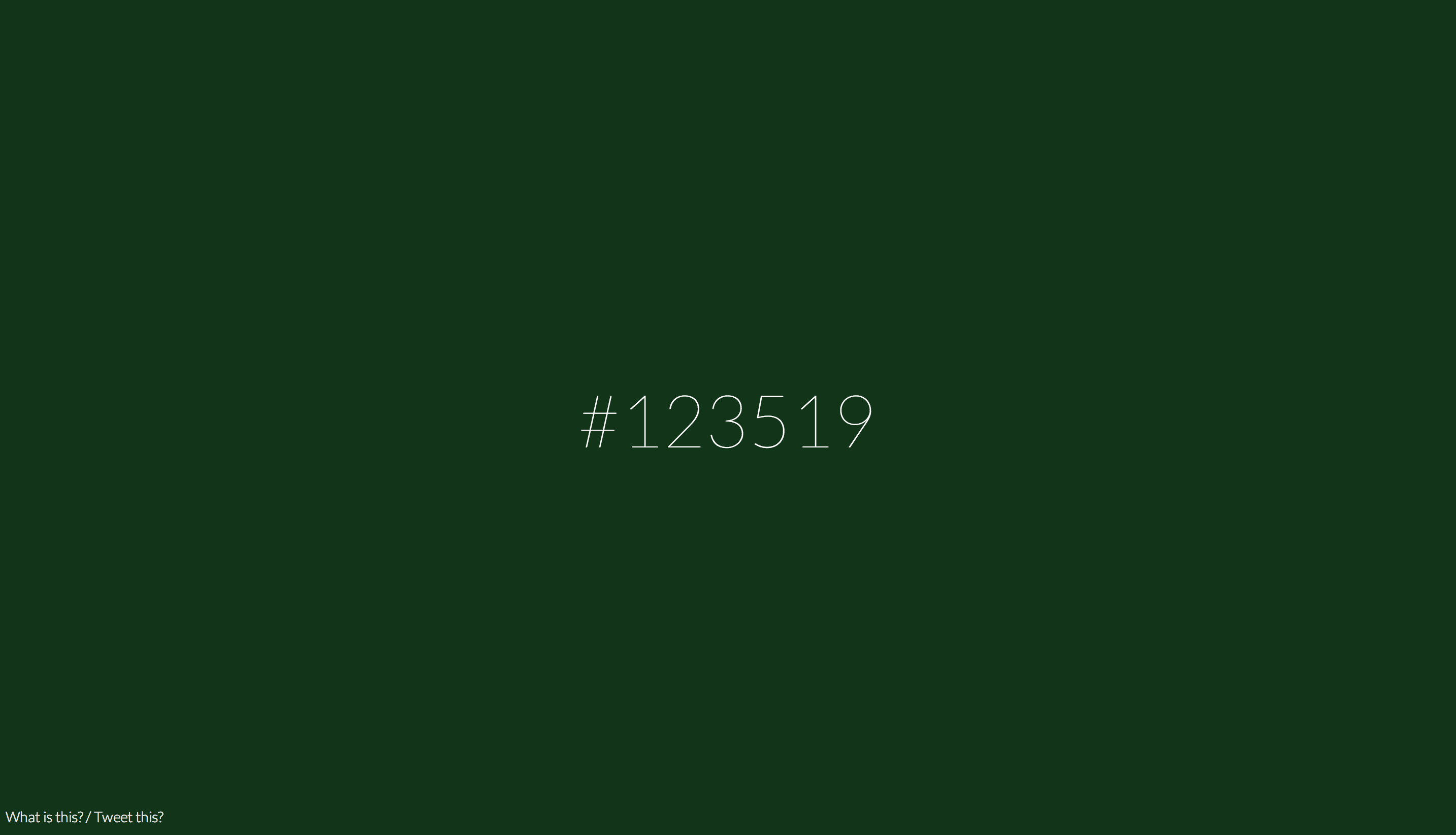A while back, a developer posted a little experiment in which the current time was being used as an hexadecimal color, applied to the body element. Better have a look at the demo.

What a clever little experiment it was, yet I can’t say I am completely fond of the way it has been implemented. Not only colors are restricted between #000000 (00:00:00) and #235959 (23:59:59), but the JavaScript part did not really please me. So here is my try.
There are two things I wanted to give specific attention to:
- Having a very wide range of colors available;
- Making sure the clock is still readable on very dark/light colors.
Alright, let’s go.
See the Pen Color Clock by Kitty Giraudel (@KittyGiraudel) on CodePen.
Building the app
Let’s start with a little skeleton for our application:
;(function () {
'use strict'
// Our main function
function colorClock() {
// …
}
// Call our function every second
var timer = setInterval(colorClock, 1000)
})()Nothing special here: at every second, we call the colorClock function. This function will have to do three things:
- display the current time;
- apply the computed color to the body;
- change font color if too dark/light.
Printing the current time
Displaying the current time is probably the easiest part of the exercise. Although I must say I got helped by a StackOverflow answer.
function colorClock() {
// …
function dateToContent(date) {
return date.toTimeString().replace(/.*(\d{2}:\d{2}:\d{2}).*/, '$1')
}
var date = new Date()
document.body.innerHTML = dateToContent(date)
}Applying the computed color to the body
Let’s tackle the actual challenge. My thought process was as follow. Our time is made of 3 components: hours, minutes and seconds. A color is made of 3 components: red, green and blue channels. If I convert each component to a 255 value, I can have a color from the current time (where hours are converted to red, minutes to green and seconds to blue).
Alright. The first thing we need is to compute our color channels based on the current time. To do so, we need a RGBFromDate function that takes an instance of Date, and returns an array of 3 channels expressed as (rounded) numbers between 0 and 255.
function RGBFromDate(date) {
return [
(date.getHours() / 24) * 255,
(date.getMinutes() / 60) * 255,
(date.getSeconds() / 60) * 255,
].map(function (e) {
return Math.round(e)
})
}At this point, we have everything we need to apply the color to the body.
var date = new Date()
var channels = RGBFromDate(date)
document.body.style.backgroundColor = 'rgb(' + channels.join(',') + ')'Changing font color based on body color
Last but not least, we need to find a way to change the font color if the background color is too dark or too light, so the text remains readable at all time. To do this, we have to compute the luminance of a color. If it is higher than .7, then the color is very bright and text should be black.
function colorLuminance(red, green, blue) {
return (0.299 * red + 0.587 * green + 0.114 * blue) / 256
}
function colorFromRGB(red, green, blue) {
return colorLuminance(red, green, blue) > 0.7 ? 'black' : 'white'
}
document.body.style.color = colorFromRGB.apply(this, channels)Final thoughts
That’s it. Here is the final code:
;(function () {
'use strict'
function colorClock() {
// Get RGB channels from a date
function RGBFromDate(date) {
return [
(date.getHours() / 24) * 255,
(date.getMinutes() / 60) * 255,
(date.getSeconds() / 60) * 255,
].map(function (e) {
return Math.round(e)
})
}
// Get color luminance as a float from RGB channels
function colorLuminance(red, green, blue) {
return (0.299 * red + 0.587 * green + 0.114 * blue) / 256
}
// Get font color from RGB channels from background
function colorFromRGB(red, green, blue) {
return colorLuminance(red, green, blue) > 0.7 ? 'black' : 'white'
}
// Get formatted date
function dateToContent(date) {
return date.toTimeString().replace(/.*(\d{2}:\d{2}:\d{2}).*/, '$1')
}
var date = new Date()
var channels = RGBFromDate(date)
document.body.style.color = colorFromRGB.apply(this, channels)
document.body.style.backgroundColor = 'rgb(' + channels.join(',') + ')'
document.body.innerHTML = dateToContent(date)
}
var t = setInterval(colorClock, 1000)
})()You can play with the code on CodePen:
See the Pen Color Clock by Kitty Giraudel (@KittyGiraudel) on CodePen.
Hope you liked it!